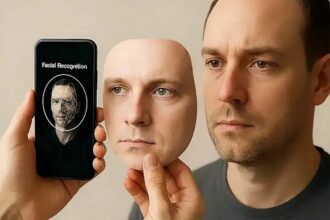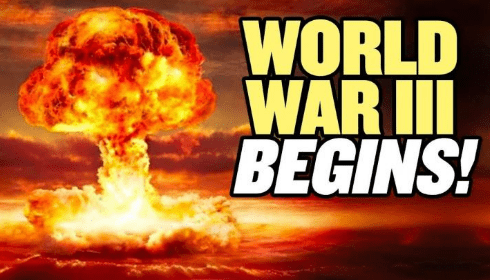Voodoo, often spelled Vodou or Vodun, is a religion that evokes fascination, fear, and misunderstanding in equal measure. Its rich history, rooted in the resilience of enslaved Africans, blends spiritual traditions with Catholic influences, creating a unique syncretic faith that thrives primarily in Haiti and parts of West Africa. Yet, Voodoo’s reputation has been marred by sensationalized tales of horrific crimes, from ritualistic murders to accusations of spreading disease.
Are these stories grounded in reality, or are they myths born from prejudice and cultural misunderstanding?
The Origins of Voodoo: A Fusion of Faith and Survival
Roots in African Traditions
Voodoo traces its origins to the 16th and 17th centuries, when enslaved Africans from diverse ethnic groups—such as the Dahomean, Kongo, and Yoruba—were forcibly brought to the Caribbean, particularly to the French colony of Saint-Domingue (modern-day Haiti). Stripped of their freedom, these individuals clung to their spiritual heritage as a source of identity and resistance. The term “Voodoo” derives from the Fon word vodun, meaning “spirit” or “deity,” reflecting the religion’s focus on connecting with spiritual forces.

Enslaved Africans were coerced into adopting Catholicism by their European captors, who banned traditional African worship. However, rather than abandoning their beliefs, they blended them with Catholic practices, creating a syncretic religion that honored both African spirits (lwa) and Catholic saints. This fusion allowed practitioners to maintain their cultural roots under the guise of Christianity, a subversive act of survival in the face of oppression.
Voodoo in Haiti: A Force of Liberation
Haitian Vodou played a pivotal role in the Haitian Revolution (1791–1804), the only successful slave revolt in history, which led to Haiti’s independence from France. Ceremonies, such as the legendary Bois Caïman ritual, galvanized enslaved communities, with Vodou priests (houngans) and priestesses (manbos) serving as spiritual and political leaders. This historical significance underscores Vodou’s role as a unifying force, far removed from the malevolent stereotypes later imposed upon it.
Today, Vodou remains a cornerstone of Haitian identity, with approximately half of Haiti’s 9.6 million people practicing or engaging with its rituals. It is recognized by the Haitian constitution as a legitimate religion, yet it continues to face prejudice, both domestically and globally.
The 1864 Bizoton Trial: The Case That Demonized Voodoo
A Gruesome Allegation
In February 1864, a sensational trial in Haiti cemented Voodoo’s dark reputation in the Western imagination. Eight individuals—four men and four women, including siblings Congo and Jeanne Pelé—were convicted of abducting, murdering, and cannibalizing a 12-year-old girl in the village of Bizoton, near Port-au-Prince. According to accounts, the group, led by Congo Pelé, sought to perform a ritual sacrifice to gain wealth and power through Vodou. The victim, their niece, was allegedly strangled, dismembered, and consumed during a ceremony on New Year’s Eve 1863.

The trial, held under President Fabre Geffrard, a Catholic who sought to distance Haiti from its African heritage, drew international attention. Sensationalized reports, such as those by British diplomat Sir Spenser St. John, painted Vodou as a barbaric practice rife with human sacrifice and cannibalism. The defendants were publicly executed on February 13, 1864, before a large crowd, reinforcing the narrative of Vodou as inherently evil.
Questioning the Narrative
Modern scholars, such as Kate Ramsey, question the validity of the Bizoton trial. No trial transcripts survive, and much of the evidence relied on confessions extracted through torture. The victim’s age was inconsistently reported (ranging from seven to twelve), and there was little physical evidence to corroborate the allegations. Geffrard’s pro-Catholic stance and desire to “civilize” Haiti by suppressing African traditions suggest the trial may have been a politically motivated spectacle to vilify Vodou.

This case, widely publicized through global media, shaped enduring stereotypes about Vodou, associating it with savagery and witchcraft. These misrepresentations persist in popular culture, from Hollywood films like White Zombie (1932) to sensationalist news reports.
Esteis Liberis and the 1910 Child Sacrifice Allegations
A Police Report’s Claims
In October 1910, a Haitian police inspector reported on Esteis Liberis, a 24-year-old Vodou priestess accused of orchestrating child sacrifices. According to the report, Liberis conducted ceremonies honoring a snake god (likely Damballa) and suggested that human sacrifice was necessary to bring prosperity to her community during times of misfortune. A young girl was allegedly kidnapped, strangled, and beheaded, with her blood collected for ritual consumption. The report further claimed that two other girls involved in preparing the body were also sacrificed days later to appease the lwa.

Authorities reportedly found the remains of a 12-year-old girl in a barrel at Liberis’ home, leading to her implication in these crimes. However, like the 1864 case, details are scarce, and the lack of corroborating evidence raises questions about the accuracy of the report.
Contextualizing Ritual Sacrifice
While these allegations are horrifying, they must be viewed within the broader context of Vodou’s practices. Animal sacrifices, such as goats or chickens, are common in Vodou to honor the lwa, but human sacrifice is not a documented or widespread practice. Sensationalized accounts often exaggerate or fabricate such incidents to demonize the religion, reflecting colonial-era biases that equated African traditions with barbarism.
Reverend Willie Maxwell: Voodoo in the American South
A String of Suspicious Deaths
In the 1970s, Reverend Willie Maxwell, a Baptist preacher and alleged Vodou practitioner in Alabama, became infamous for a series of mysterious deaths linked to him. Maxwell, reportedly trained by the Seven Sisters, a Louisiana Voodoo sect, was feared in his African-American community for his supposed supernatural powers.
Between 1969 and 1976, five individuals close to Maxwell died under suspicious circumstances:
- 1969: His first wife was found strangled in her car. Maxwell, initially charged, was acquitted after marrying the prosecution’s key witness, who altered her testimony.
- 1972: His brother died of hypothermia and alcohol poisoning.
- 1973: His second wife, the former prosecution witness, was found dead, with Maxwell collecting her life insurance.
- 1976: His nephew and a 16-year-old adopted daughter died in separate incidents, the latter found under a car.
- 1977: During the girl’s funeral, Maxwell was shot dead by her uncle, who accused him of murder.
Maxwell’s ability to evade conviction, coupled with his financial gains from life insurance, fueled speculation of Vodou-related “black magic.” His case inspired Harper Lee’s unfinished book, exploring the intersection of Voodoo and crime, though she never completed it.
Voodoo or Coincidence?
While Maxwell’s story is compelling, there is no definitive evidence linking his alleged crimes to Vodou practices. His reputation as a Vodou practitioner may have been amplified by community fear and prejudice against African-derived religions. The lack of concrete evidence suggests that Maxwell’s crimes, if true, were motivated by personal gain rather than religious ritual.
The 2010 Haiti Cholera Epidemic: Voodoo Under Fire
A Tragic Misunderstanding
In January 2010, Haiti was devastated by a 7.0-magnitude earthquake, killing an estimated 230,000–300,000 people and displacing 1.5 million. The subsequent cholera outbreak, likely introduced by Nepalese UN peacekeepers, claimed over 2,500 lives by December 2010, with 121,000 cases reported. Amid widespread panic and ignorance about cholera’s waterborne transmission, Vodou priests became scapegoats.

Mobs, believing Vodou priests were spreading cholera through “black magic” or cursed powders, lynched at least 45 houngans and manbos in December 2010. Many were hacked with machetes, stoned, or burned alive, particularly in Jeremie, Cap Haitien, and the Central Plateau. Max Beauvoir, Haiti’s Vodou supreme leader, pleaded for government intervention, citing the religion’s constitutional protection.
The Role of Misinformation
The lynchings highlight the deadly consequences of misinformation. Cholera, easily treatable with rehydration, was poorly understood in Haiti’s rural areas, where access to education and healthcare was limited. Fearful communities, already reeling from the earthquake, turned to familiar spiritual explanations, wrongly blaming Vodou priests. The UN’s failure to swiftly address suspicions about its peacekeepers further fueled unrest.
Nigeria’s Voodoo Murders: A 2001 Case
A Teen’s Confession

In July 2001, 13-year-old Jummai Hassan was arrested in Maiduguri, Nigeria, for the disappearance of a two-year-old boy, “Ibro.” Hassan confessed to killing the child and selling his body parts to a Vodun priest for ritual use. She further claimed to be part of a cult responsible for 48 murders, including her father’s, led by a senior state official. Despite searches, no additional bodies were found, and evidence linking the official to the crimes was inconclusive.
Vodun in West Africa
Unlike Haitian Vodou, West African Vodun, practiced in countries like Nigeria and Benin, is not syncretized with Christianity. It emphasizes ancestral spirits and natural forces, with rituals that may include animal sacrifice but rarely, if ever, human sacrifice. Hassan’s claims, while chilling, lack corroboration and may reflect societal fears about Vodun’s mystical reputation rather than actual religious practices.
Debunking the Myths: Is Voodoo Inherently Violent?
Misrepresentation in Media
Vodou and Vodun have long been misrepresented in Western media as malevolent and superstitious. Films like White Zombie (1932) and London Voodoo (2004) perpetuate stereotypes of Vodou as a cult of sorcery and violence. These portrayals stem from colonial-era biases that demonized African religions to justify slavery and cultural suppression.

In reality, Vodou is a community-oriented religion focused on serving the lwa through prayer, dance, and offerings. Spirit possession, a central practice, allows devotees to connect with the divine, offering guidance and healing. While animal sacrifices are common, human sacrifice is not a standard or sanctioned practice.
The Impact of Prejudice
The 1864 Bizoton trial, the 1910 Liberis case, and the 2010 lynchings reflect a pattern of scapegoating Vodou during times of crisis. Political agendas, religious intolerance, and sensationalist reporting have amplified isolated incidents, overshadowing the religion’s cultural and spiritual significance. In Haiti, Vodou’s role in art, music, and identity—celebrated in the “Haitian Renaissance” of the mid-20th century—demonstrates its enduring value.
Separating Fact from Fiction
Voodoo, whether in Haiti or West Africa, is a complex and vibrant religion born from resilience and adaptation. While horrific crimes have been attributed to its practitioners, many of these cases lack verifiable evidence or were exaggerated to serve political or cultural agendas. The 1864 Bizoton trial, tainted by coercion and bias, set a precedent for misunderstanding Vodou, while the 2010 lynchings and Nigerian cases highlight the dangers of misinformation and fear. Far from a monolithic force of evil, Vodou is a diverse tradition that fosters community, spirituality, and cultural pride.
By examining these events critically, we can move beyond stereotypes to appreciate Vodou’s historical and contemporary significance. Its story is one of survival, syncretism, and strength, not the sensationalized horror of popular imagination.

















